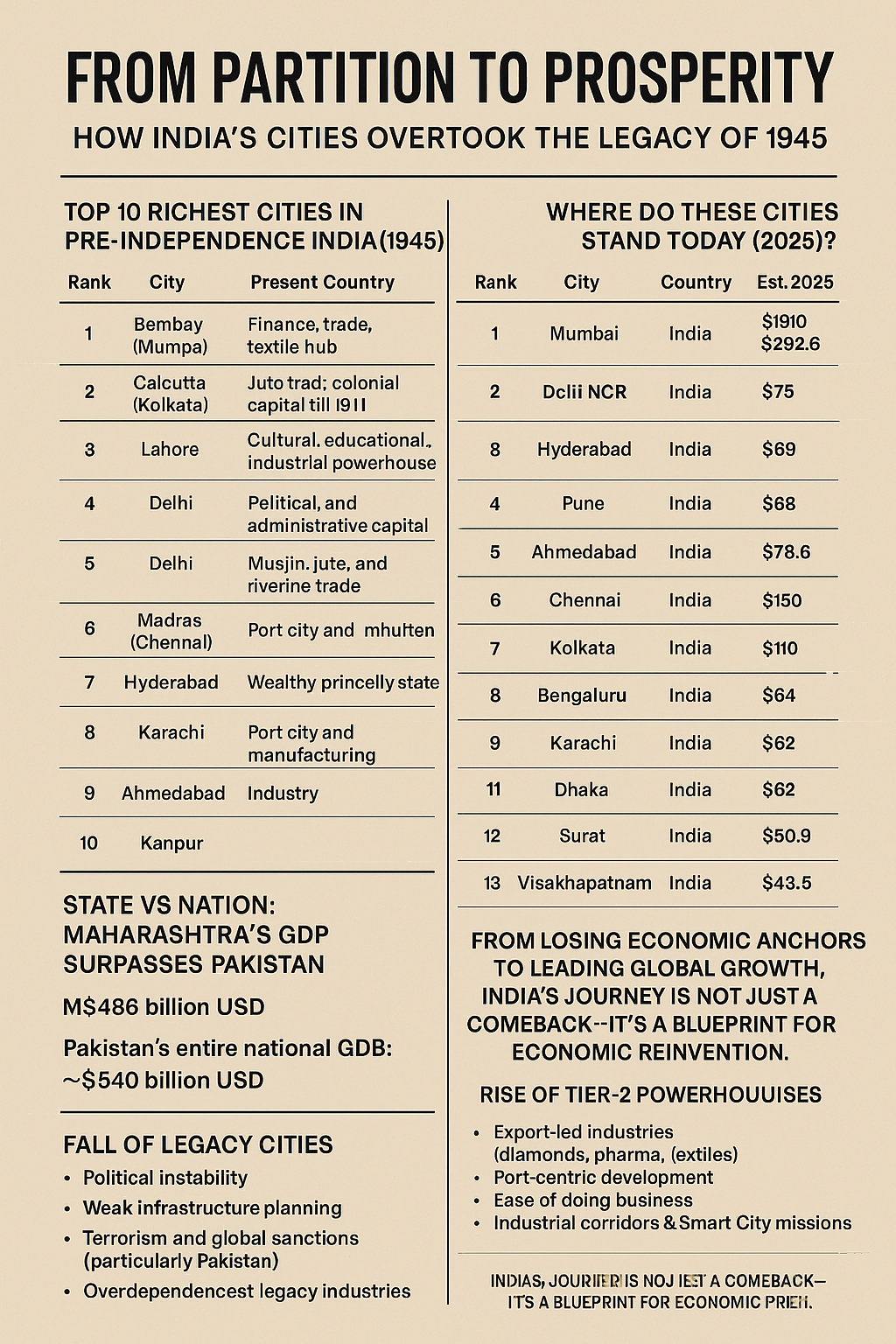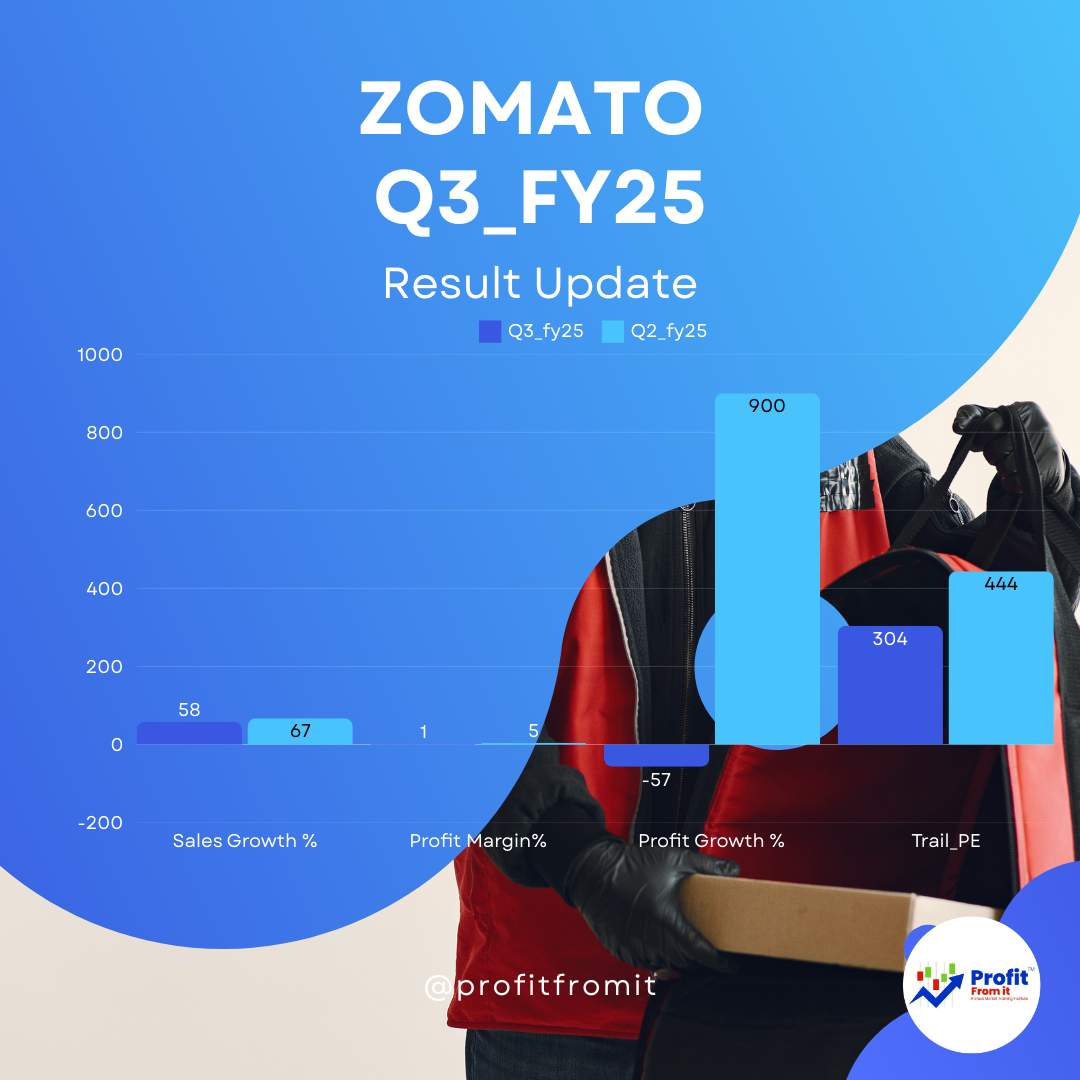
🏙️ From Partition to Prosperity: How India’s Cities Overtook the Legacy of 1945 to Dominate South Asia’s Economy
Subtitle: Why India's Tier-2 Cities Are Rising While Former Economic Giants in Pakistan & Bangladesh Fade
📜 Introduction: A Nation Divided, A Legacy Redefined
In 1947, when British India was partitioned, the division wasn’t just territorial—it was economic. The “right hand” of India was severed to form Pakistan, taking with it economic jewels like Lahore and Karachi. Simultaneously, the “left hand” became East Pakistan (now Bangladesh), which included Dhaka, a historical hub of jute and textile trade.
These cities were among the richest in the Indian subcontinent in 1945. But in the decades that followed, India, despite losing three of its richest cities, embarked on a journey of reform, infrastructure, and inclusive growth—ultimately transforming itself into the world’s 5th largest economy (and projected 3rd by 2028).
🏆 Top 10 Richest Cities in Pre-Independence India (1945)
(Including present-day Pakistan & Bangladesh)
📊 Where Do These Cities Stand Today (2025)?
💡 State vs Nation: Maharashtra's GDP Surpasses Pakistan
India’s resilience is not only visible in its cities—but even more remarkably, in the economic performance of its individual states.
Maharashtra’s GDP (2025 est.): $486 billion USD
Pakistan’s entire national GDP: ~$340 billion USD
This single Indian state now generates more economic output than an entire neighboring country, underscoring India’s strategic economic depth, policy effectiveness, and structural robustness.
📈 The Fall of Legacy Cities vs. The Rise of Tier-2 Powerhouses
Karachi, Lahore, and Dhaka — once the crown jewels — have struggled to retain their stature due to:
Political instability
Weak infrastructure planning
Terrorism and global sanctions (especially Pakistan)
Overdependence on legacy industries
Meanwhile, Surat and Visakhapatnam are rising due to:
Export-led industries (diamonds, pharma, textiles)
Port-centric development
Ease of doing business
Industrial corridors & Smart City missions
🔮 Strategic Insight for Investors
India's rise wasn’t just driven by legacy cities like Mumbai and Delhi—it was unlocked by empowering Tier-2 cities with infrastructure, policy reforms, and sectoral focus. This decentralized model is a blueprint for sustainable urban economic expansion.
Key Learning: Legacy can be inherited, but leadership must be built.
🚀 Conclusion: India’s Economic Geography Reimagined
Despite the traumatic economic loss of its richest cities at independence, India not only recovered—it surged ahead. The journey from partitioned loss to global leadership is anchored in sound policy, inclusive growth, and strategic urban development.
As India eyes the No. 3 global GDP position by 2028, cities like Surat and Vizag symbolize what’s possible when potential meets policy.
🚪 From losing economic anchors to leading global growth, India’s journey is not just a comeback—it's a blueprint for economic reinvention.
If You liked the blog: click heart and forward to others



 for Investors The provided chart outlines key metrics for Nifty 500 companies across different periods (FY22 t.png)





